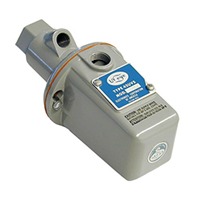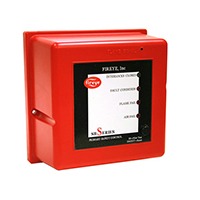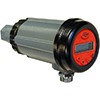All information was provided by Fireye. Learn more at fireye.com
Kele has recently partnered with Fireye to bring you new and innovative products that will help you do business better when it comes to combustion control and flame safety. Today, we’re highlighting burner controls and how you can leverage them in your next project. Let’s go!
With burners being the workhorse of many industrial processes, keeping them running safely and efficiently relies on a complex system called burner controls. We’re going to explore specific components, troubleshooting techniques, and advanced control strategies that ensure smooth operation so you can get a better look at the big picture when it comes to this type of product.
To begin, let’s get a better understanding of essential components that help to create precise combustion. We’ll cover six different types: flame safeguards, fuel shut-off valves, ignition systems, combustion air control, safety limit switches, and BAS integration.
Flame Safeguard
There are three different types of flame safeguards: ultraviolet (UV), infrared (IR), and rectification (flame rod). Each type comes with specific advantages for different flame characteristics and environments. When it comes to its functionality, flame safeguards continuously monitor flame presence. It utilizes a detector to “see” the flame’s UV or IR radiation or measures the change in electrical current caused by the flame (flame rod). It can then initiate burner shutdown in case of flame loss or improper ignition sequence.
Fuel Shut-Off Valve
The two types of valves we’re covering are solenoid valves and motorized valves. Your selection depends on fuel type, pressure, and flow rate needs and requirements. Its main function is to help regulate fuel flow based on flame safeguard signals. It will open to allow fuel flow during proper operation and closes tightly to stop fuel delivery in case of a safety issue.
Ignition System
When choosing an ignition system, your final choice of a spark ignition system, hot surface igniter, or pilot light, will depend on burner type and fuel. The right system will provide the initial spark or pilot flame to ignite the main burner fuel.
Combustion Air Control
You can choose between dampers and valves for combustion air control. These two distinct products help manage airflow for proper air-fuel mixture. They also regulate the amount of air entering the burner to ensure optimal combustion efficiency and minimize emissions.
Safety Limit Switches
For safety limit switches, you can choose from pressure switches, temperature switches, or flow switches. All types assist in monitoring critical operating parameters. They also act as fail-safe mechanisms. They are designed to automatically shut down the burner if pressure, temperature, or flow exceeds safe limits, preventing potential accidents.
Building Automation System (BAS) Integration
BAS integration enables centralized monitoring and control of burner systems from a designated BAS interface. This allows for data logging, performance analysis, and remote troubleshooting.
What Are Good Troubleshooting Techniques for Optimal Performance?
- Flame Safeguard Issues:
- Check for dirty or malfunctioning flame detector.
- Verify adequate fuel pressure and proper air-fuel mixture.
- Ensure proper wiring and connections within the flame safeguard system.
- Fuel Shutoff Valve Problems:
- Inspect the valve for wear or debris that might impede proper closure.
- Test the solenoid or motor for proper operation based on the valve type.
- Verify electrical connections and control signals to the valve.
- Ignition System Malfunctions:
- Check for fouled spark plugs or damaged igniter components.
- Ensure proper gas flow to pilot lights if applicable.
- Verify adequate voltage reaching the ignition system.
- Combustion Air Control Problems:
- Inspect dampers or valves for proper movement and linkage issues.
- Ensure no obstructions are restricting air intake.
- Calibrate air flow sensors if integrated into the control system.
Take It One Step Further with Advanced Control Strategies for Enhanced Efficiency
- Oxygen Trim Control: Utilizes an oxygen sensor to measure exhaust oxygen levels and adjust air-fuel ratio for maximum combustion efficiency.
- Combustion Ratio Control: Maintains a specific ratio of fuel to air for processes requiring precise temperature control.
- Cascading Burner Control: Coordinates the operation of multiple burners in a sequence for optimized heat output and fuel usage.
- Modulating Burner Control: Continuously adjusts fuel flow and air intake based on real-time process demands, maximizing efficiency and minimizing fuel waste.
By understanding the intricacies of burner control components, troubleshooting techniques, and advanced control strategies, you can ensure the safe, efficient, and environmentally responsible operation of your industrial burners. Referencing resources from Kele, Fireye, and other knowledge bases, provides a deeper understanding for specific components and technical specifications. Remember, consulting with a qualified HVAC/BAS technician is crucial for maintaining your burner control system and keeping your industrial processes running smoothly.
Contact Kele today and see how we can help you with your combustion control and flame safety needs—we’ve got you covered!
Check out our Fireye Product Selections



